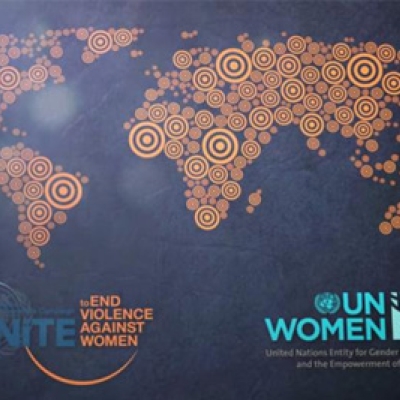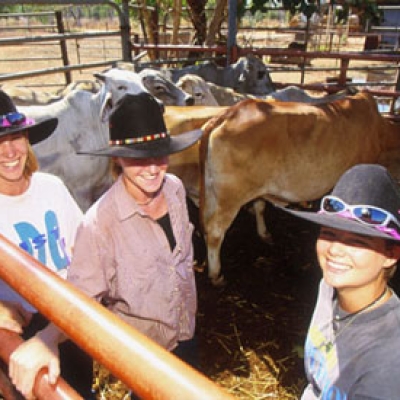Refine results
-
Employers18 February 2015Quick Guide
Reasonable Adjustments
Some people with disabilities may face barriers at work because of some feature of their work situation which could readily be altered. Making these changes is commonly referred to as ‘reasonable adjustments’. Employers can be required by law to make reasonable adjustments to the workplace. Failure to do so may be discrimination. Adjustments should respond to the particular needs of the… -
14 December 2012Book page
Social Justice Report 2005: Chapter 3
The first twelve months of the federal government's new arrangements for the administration of Indigenous affairs has ended. The primary focus of this period has been on abolishing the Aboriginal and Torres Strait Islander Commission (ATSIC) and creating new processes to engage with local Indigenous communities and coordinate mainstream delivery of services to Aboriginal and Torres Strait… -
Sex Discrimination4 December 2014Project

Violence against women
Violence against women continues to be one of the most prevalent human rights abuses in Australia, and around the world. -
14 December 2012Book page
HREOC Social Justice Report 2002: Indigenous women and corrections - A Landscape of Risk
a) Rates of incarceration of Indigenous women b) Recidivism rates among Indigenous women c) Types of crime committed by Indigenous women d) Over-policing e) Sentencing patterns for Indigenous women f) Characteristics of Indigenous women who are imprisoned -
Commission – General22 July 2021Webpage
Privacy
This section explains the type of information that is collected by the Commission, how such information is used, under what circumstances and to whom it may be disclosed, and describes security measures in place on the website. -
14 December 2012Book page
Social Justice Report 2006: Chapter 2: The new arrangements for Indigenous affairs – facilitating Indigenous access to government services
It has now been over two years since the federal government introduced new arrangements for the administration of Indigenous affairs. One of the catchcries of the new arrangements is that they are aimed at ‘harnessing the mainstream.’ This is to be achieved by removing or reducing the barriers that prevent Indigenous peoples from accessing existing mainstream services on an equitable… -
14 December 2012Book page
Social Justice Report 2007 - Chapter 3: The Northern Territory 'Emergency Response' intervention
On 21 June 2007, the Australian Government announced a ‘national emergency response to protect Aboriginal children in the Northern Territory’ from sexual abuse and family violence.[1] This has become known as the ‘NT intervention’ or the ‘Emergency Response’. The catalyst for the measures was the release of Report of the Northern Territory Board of Inquiry into… -
Rights and Freedoms14 December 2012Project

Bush Talks: Rural Health
In 1998 and 1999 the Commission (then known as HREOC) visited regional, rural and remote areas in every State and the Northern Territory as part of the Bush Talks consultations. -
14 December 2012Book page
17. Major Findings and Recommendations of the Inquiry
In addition to the detailed findings in each of Chapters 5-16, the Inquiry has made the following major findings in relation to Australia's mandatory immigration detention system as it applied to children who arrived in Australia without a visa (unauthorised arrivals) over the period 1999-2002. -
14 December 2012Book page
9. Mental Health of Children in Immigration Detention
This chapter addresses the impact of the detention environment on the mental health of children and the measures taken to address their mental health needs. Consistent with the breadth of protection given to the welfare of children under the Convention on the Rights of the Child (CRC), the Inquiry uses the term mental health to describe the psychological well-being of children as well as… -
14 December 2012Book page
Social Justice Report 2004 : Chapter 2 : Walking with the Women - Addressing the needs of Indigenous women exiting prison
Introduction Pre and post-release programs for Indigenous women exiting prison An overview of Indigenous women in corrections Intersectional discrimination - Addressing the distinct experiences of Indigenous women Post-release programs for Indigenous women exiting prison - common themes from consultations Policy and programs relating to Indigenous women exiting prison Post-release housing… -
Commission – General14 December 2012Webpage

History of the Commission
The Australian Human Rights Commission (formerly known as the Human Rights and Equal Opportunity Commission) was established on 10 December 1986 (International Human Rights Day) as Australia’s national human rights watchdog. -
Legal14 December 2012Webpage
Federal Discrimination Law 2005: Chapter 3: The Racial Discrimination Act
The RDA was the first Commonwealth unlawful discrimination statute to be enacted and is different in a number of ways from the subsequent SDA, DDA and ADA. This is because it is based to a large extent on, and takes important parts of its statutory language from, the International Convention on the Elimination of all Forms of Racial Discrimination ('ICERD').1 -
14 December 2012Book page
8. Safety of Children in Immigration Detention
Recognizing that the child, for the full and harmonious development of his or her personality, should grow up in a family environment, in an atmosphere of happiness, love and understanding ... Convention on the Rights of the Child, Preamble -
14 December 2012Book page
14. Unaccompanied Children in Immigration Detention
Most children come to Australia with their parents, but some come alone, either sent by their family for their protection or because they have lost their family in a crisis. -
29 January 2013Book page
2. Women at ADFA: Harassment, Abuse, Discrimination and Assault
2.1 Introduction ADFA is a unique institution where cadets live, study, work and socialise. The intensity of this environment can exacerbate the experiences of sexual harassment, abuse, discrimination and assault. The Review had the opportunity to speak with women and men across the ADFA community and beyond. It is mindful of the pride felt by many about the inclusive culture of ADFA. Many… -
14 December 2012Book page
Appendix 1: Case studies
Until December 2009, Ali Jasmin lived with his family in Bala Uring, a small village on the island of Flores, Indonesia. His family bought fish from the local fishermen and sold them at the market. Ali had completed seven years of schooling and worked as a fisherman in a little town not far from his home. -
14 December 2012Book page
6. Australia's Immigration Detention Policy and Practice
Australian law requires the detention of all non-citizens who are in Australia without a valid visa (unlawful non-citizens). This means that immigration officials have no choice but to detain persons who arrive without a visa (unauthorised arrivals), or persons who arrive with a visa and subsequently become unlawful because their visa has expired or been cancelled (authorised arrivals)… -
14 December 2012Book page
Social Justice Report 2007 - Appendix 1
[1] The full text of the Bilateral Agreement is available online at: http://www.dia.wa.gov.au/Publications/Files/Bilateral_Agreement.pdf, accessed 24 January 2008. [2] Andrews, K., (Minister for Employment and Workplace Relations), CDEP 2006-07 To Build On Success, Media Release, 1 July 2006. [3] Bishop, J., (Minister for Education, Science and Training), Early childhood focus for Indigenous… -
Legal14 December 2012Webpage
Submission: Commission intervener
1.1 On 8 February 2002, the Full Court granted leave to the Human Rights and Equal Opportunity Commission ("the Commission") to intervene in this appeal, pursuant to s.92 of the Family Law Act 1975 (Cth) ("Family Law Act").
Pagination
- First page « First
- Previous page ‹ Previous
- …
- 60
- 61
- 62
- 63
- 64
- 65
- 66
- Current page 67
- 68
- Next page Next ›
- Last page Last »
